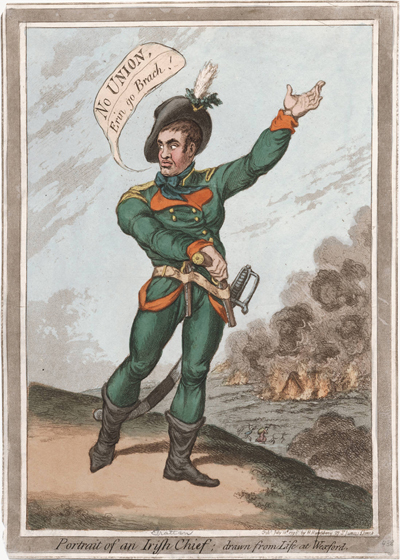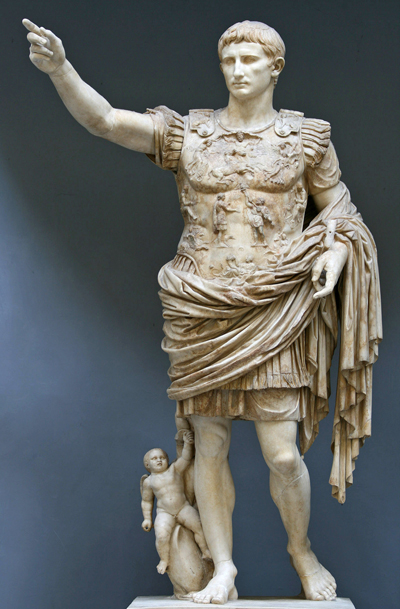Portrait of an Irish Chief
This print was almost certainly prompted by news of the bloody Wexford Rebellion which began in late May of 1798, lasted until late June, and was widely reported in a variety of British and Irish newspapers. It started when members of the United Irishmen in and around Wexford retaliated against the British for the summary execution of 36 suspected rebels at Dunlavin Green in nearby County Wicklow. Seizing arms and ammunition (otherwise forbidden to them) as they proceeded, the rebels, called Croppies for their cropped hair, won a series of victories at Oulart Hill, Enniscorthy, and Wexford Town. Eventually, however, the better armed, better supplied, and more numerous governmental forces ("yeomen") were able to surround and overwhelm the rebels, leaving behind their own path of destruction.

© Lewis Walpole Library, Yale University
The print purports to show a rebel Irish Chief at Wexford, presumably overseeing an attack on loyalist houses. Wright and Evans identify the Chief as Henry Grattan, but this is unlikely for several reasons. First, Gillray had already portrayed Grattan in several earlier prints like Irish Gratitude (1783), Evidence to Character (1798) and in Grattan addresses the Mob (1798). In every case Grattan is portrayed as a spindly man with a sharp nose and jaw, wholly unlike the Chief here. Second, Grattan was a politician. His fighting was all done in Parliamentary settings. There is no evidence that he ever wielded a sword or gun. And finally, Grattan was in London, not Wexford, attending the trial of Arthur O'Connor, at the time of the rebellion.
According to contemporary reports in the London Observer (June 24, 1798) and the Evening Mail June 29, 1798, the Chief of the Wexford Rebellion was a man called Beauchamp Bagenal Harvey. Other leaders in Wexford included Father John Murphy, Anthony Perry, and Thomas Cloney. But Gillray's Chief looks no more like any of those men than he does like Grattan. He does, however, look like some of the generic Irishhmen Gillray created in other prints of this period. So until an identifiable model can be found, I'm inclined to believe that Gillray's Chief is his own creation, standing for men like Bagenal Harvey but not based on any specific individual.
Gillray's attitude towards his Irish Chief seems to be mixed. The Chief is hardly idealized, appearing crude and unshaven, with one of his two guns appearing where his penis would be. He stands on a hill overlooking the burning buildings of Wexford while women and children flee for their lives. This would seem to be the price for his opposition to any future union with Britain and his sworn allegiance to "Ireland Forever."
Running counter to this, however, is the noble, classical pose of the Chief (seen significantly from slightly below and against an open sky) which recalls statues of Caesar Augustus. In this context, the Chief's cropped hair, combed forward, can seem almost Roman.

© Wikisource
Sources and Reading
- Commentary from the British Museum on Portrait of an Irish Chief.
- "Wexford Rebellion," Wikipedia
- "Bagenal Harvey," Wikipedia
- Thomas Wright and R.H. Evans, Historical and Descriptive Account of the Caricatures of James Gillray p. 243
- Thomas Wright and Joseph Grego, The Works of James Gillray, the Caricaturist; With the History of His Life and Times #438
Comments & Corrections
NOTE: Comments and/or corrections are always appreciated. To make that easier, I have included a form below that you can use. I promise never to share any of the info provided without your express permission.